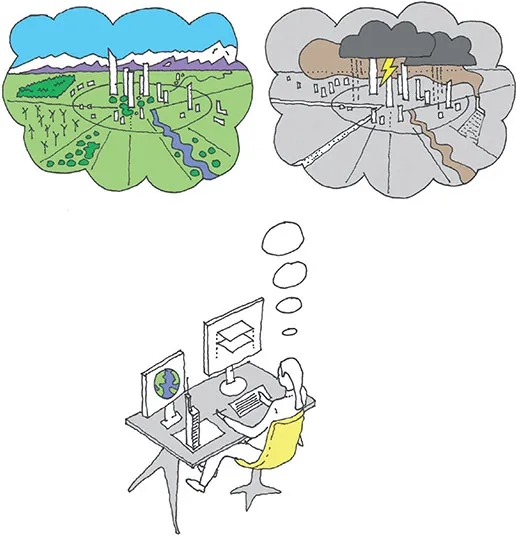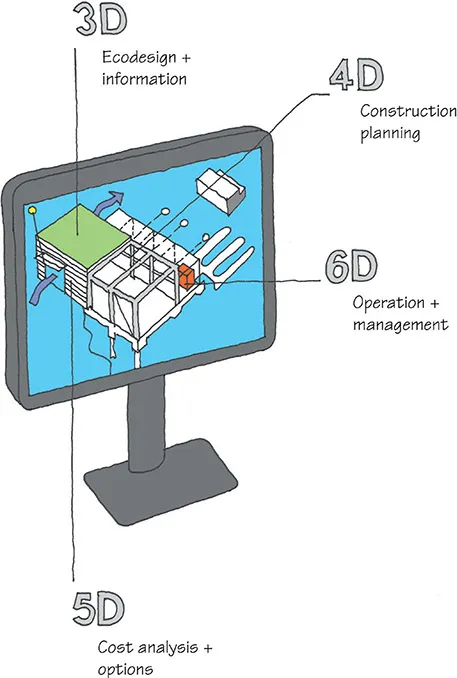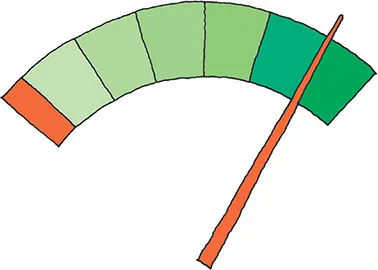
eBook - ePub
101 Rules of Thumb for Sustainable Buildings and Cities
Huw Heywood
This is a test
- 224 pagine
- English
- ePUB (disponibile sull'app)
- Disponibile su iOS e Android
eBook - ePub
101 Rules of Thumb for Sustainable Buildings and Cities
Huw Heywood
Dettagli del libro
Anteprima del libro
Indice dei contenuti
Citazioni
Informazioni sul libro
People across the world are becoming more aware of the need for the buildings and cities they live and work in to be sustainable, but the issue of how to be sustainable can seem a confusing and complex one. These rules of thumb provide universal guidelines for the sustainable design of both buildings and the urban realm. It's a global primer and textbook for anyone interested in understanding sustainability in the built environment, an ideal starting point for students as well as an aide memoir for more experienced readers and practitioners interested in this field.
Domande frequenti
Come faccio ad annullare l'abbonamento?
È semplicissimo: basta accedere alla sezione Account nelle Impostazioni e cliccare su "Annulla abbonamento". Dopo la cancellazione, l'abbonamento rimarrà attivo per il periodo rimanente già pagato. Per maggiori informazioni, clicca qui
È possibile scaricare libri? Se sì, come?
Al momento è possibile scaricare tramite l'app tutti i nostri libri ePub mobile-friendly. Anche la maggior parte dei nostri PDF è scaricabile e stiamo lavorando per rendere disponibile quanto prima il download di tutti gli altri file. Per maggiori informazioni, clicca qui
Che differenza c'è tra i piani?
Entrambi i piani ti danno accesso illimitato alla libreria e a tutte le funzionalità di Perlego. Le uniche differenze sono il prezzo e il periodo di abbonamento: con il piano annuale risparmierai circa il 30% rispetto a 12 rate con quello mensile.
Cos'è Perlego?
Perlego è un servizio di abbonamento a testi accademici, che ti permette di accedere a un'intera libreria online a un prezzo inferiore rispetto a quello che pagheresti per acquistare un singolo libro al mese. Con oltre 1 milione di testi suddivisi in più di 1.000 categorie, troverai sicuramente ciò che fa per te! Per maggiori informazioni, clicca qui.
Perlego supporta la sintesi vocale?
Cerca l'icona Sintesi vocale nel prossimo libro che leggerai per verificare se è possibile riprodurre l'audio. Questo strumento permette di leggere il testo a voce alta, evidenziandolo man mano che la lettura procede. Puoi aumentare o diminuire la velocità della sintesi vocale, oppure sospendere la riproduzione. Per maggiori informazioni, clicca qui.
101 Rules of Thumb for Sustainable Buildings and Cities è disponibile online in formato PDF/ePub?
Sì, puoi accedere a 101 Rules of Thumb for Sustainable Buildings and Cities di Huw Heywood in formato PDF e/o ePub, così come ad altri libri molto apprezzati nelle sezioni relative a Arquitectura e Arquitectura general. Scopri oltre 1 milione di libri disponibili nel nostro catalogo.
Informazioni
Chapter 1
The Principles of Sustainability

- The nature of sustainability
- The welfare of future generations
- Creating sustainable environments
- Climate change
1. There’s Only One Planet Earth
There is only one earth, and its ability to support an ever-increasing human population is limited. Based on today’s rate of consumption, we need one and a half earths to provide all our resources and to absorb our waste and CO2. We are treating the planet like an overdrawn bank account. At this rate, by 2050 we would need the support of three earths, which we do not have. There is an ethical duty to design the built environment to operate within the planet’s means, and to a minimum ecological footprint.


Rule 1
2. Sustainability Means Thinking about Tomorrow Today
Our decisions and actions as designers today will have an impact on the planet for future generations. The designer’s goal is the improved long-term quality of both human life and of supporting ecosystems. Make all decisions with future generations in mind.


Rule 2
3. Economy, Equity, Environment: The Three Pillars of Sustainability
These three pillars of sustainability are known as the ‘three Es’. All of society benefits from buildings that are affordable to procure and functional to operate, now and into the future. Society must need and want development for it to be inclusive, it must have cultural and historical relevance and it must be joyful and useful to all. And because good design is enduring, it always seeks to protect and enhance the environment and its ecosystems.


Rule 3
4. Sustainable Design is a Method, Not a Style
Buildings and cities will only be sustainable if we set out intentionally to make them so, and this requires an interdisciplinary understanding of the economic, social, environmental and technical issues to be applied from the outset. Once a building has been designed, it is too late to make it sustainable: bolt-on features and gadgets that contribute little or nothing of environmental value are known as ‘eco-bling’, and they are often merely boastful. Set out to make buildings sustainable, or else they will not be.


Rule 4
5. Sustainable Design is 6-Dimensional
A sustainable building is holistic, conceived with its whole life in mind. The effectiveness of its environmental design qualities, as well as its environmental impacts, can be examined during the design stages. This is possible because traditional 2D drawings have become intelligent 3D virtual models, in which time is the 4th dimension and the lifetime cost of our decisions is the 5th. In a 6D model, the as-built project information would become available to the owner in order to enable sustainable operation of the building. Innovate with the available tools, to create sustainable environments–design in six dimensions.


Rule 5
6. How ‘Green’ is Your Building?
‘Green’ means sustainable, but there are many shades of green. A ‘light-green’ building will target a few of these rules of thumb. A ‘deep-green’ building will successfully adopt most of them. Aim for the deepest green possible. A deep-green building will:
- Have a highly energy-efficient envelope
- Be a net producer of energy and a zero-carbon emitter
- Optimise use of resources and embodied energy
- Minimise water use and waste
- Be healthy and non-polluting
- Be long lasting, adaptable and easy to dismantle


Rule 6
7. What on Earth is the Environment?
The ancient Greeks did not have the word ‘environment’. The word as we use it today is relatively ...